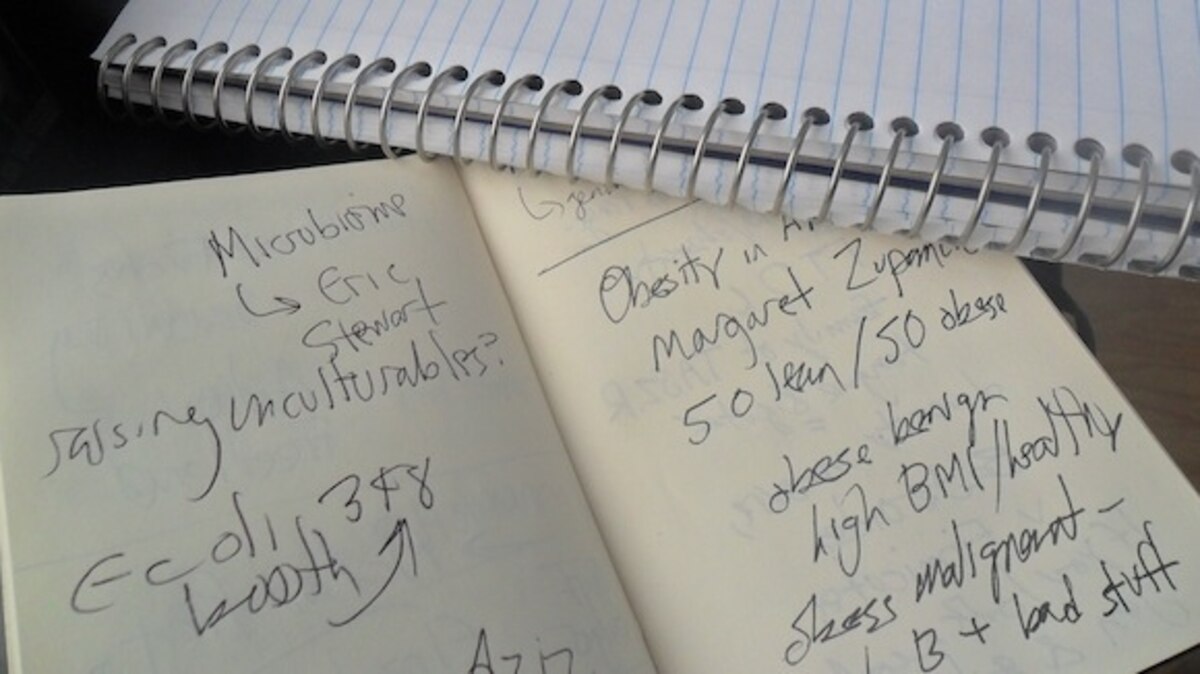
Siri Carpenter and Jeanne Erdmann have started a cool project called The Open Notebook, in which they talk to science writers about how they put together a particular story. For their latest dissection, they chose my New York Times story from last year on the microbes that swarm in our bodies. They talked to me about how I wrote that piece, and my approach to writing in general (short answer: chaos). They even included an audio excerpt from one of the interviews I did for the story. If you’re curious about the sausage around here gets made, check it out.
[Image: My microbiome Moleskine]